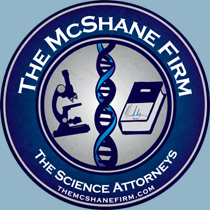In a series of posts, we are going to talk about method validation. Part 1: Introduction-Is it valid, invalid or non-validated? Part 2: What is method validation? Part 3: Can we use someone else’s validated method? Part 4: What triggers verification, re-validation or out right new validation of a method? Part 5: What are the […]

Risky Business: Direct Liquid Injection Gas Chromatography
Believe it or not, some testing labs who perform EtOH analysis still use direct liquid injection Gas Chromatography instead of headspace. When I say believe it or not, you will see by the end of this post that it is foolish to perform direct liquid injection especially looking for what is already a volatile organic […]

Mass Spectroscopy for Lawyers Part 9: Other topics of interest in GC-MS
In a series of posts, we are going to talk about Mass Spectrometry. Introduction-The different configurations and the Electron Impact process What types of mass analyzers are there? What type of detectors are there? What types of analysis can be done? How do you read the output? How do they come to a qualitative measure […]

Mass Spectroscopy for Lawyers Part 7: How do they quantitate the results?
In a series of posts, we are going to talk about Mass Spectrometry. Introduction-The different configurations and the Electron Impact process What types of mass analyzers are there? What type of detectors are there? What types of analysis can be done? How do you read the output? How do they come to a qualitative measure […]

Mass Spectroscopy for Lawyers Part 4: What types of analysis can be done?
In a series of posts, we are going to talk about Mass Spectrometry. Introduction-The different configurations and the Electron Impact process What types of mass analyzers are there? What type of detectors are there? What types of analysis can be done? How do you read the output? How do they come to a qualitative measure […]

The Particular Witness Rule as established in Bullcoming v. New Mexico
SPECIAL EDITION NEWS FLASH: [Full Disclosure: I was one of the co-authors on the NACDL/NCDD amicus curiae briefs in the case of Bullcoming v. New Mexico. You can hear the audio of the oral argument here. I have waited several hours on purpose to post here in order to try to remain objective.] On September […]

Emerging Science: Dried Blood Spot Analysis in Toxicology
Dried Blood Spot (DBS) or Dry Plasma Spot (DPS) analysis as applied to forensic analytical chemistry (toxicology) for Drugs of Abuse testing is an emerging science that there has been some recent activity in the peer reviewed literature. This post will examine this emerging technology and evaluate the benefits and the limitations of this assay. […]

False Conclusions and False Convictions: Attempts of Elucidating Pharmacodynamic Effect from an Analytical Chemistry Result-How Solely an Analytical Chemistry Result in a DUID Prosecution Cannot Scientifically Support a Conclusion of Driving Under the Influence of Drugs
False Conclusions and False Convictions: Attempts of Elucidating Pharmacodynamic Effect from an Analytical Chemistry Result-How Solely an Analytical Chemistry Result in a DUID Prosecution Cannot Scientifically Support a Conclusion of Driving Under the Influence of Drugs To download this post as a finished pdf article please click on the below: False Conclusions and False Convictions- […]

What is the difference between HS-GC-FID and GC-MS?
First let’s remove the short hand and really write out what we are doing typically. For blood analysis for EtOH, its proper technical name is Isothermal Static Headspace Gas Chromatography using Wall Coated Open Tubular Capillary Columns with Flame Ionization Detector. We just short name it to HS-GC-FID. The technique is made up of distinct […]

Fool’s Gold or Real Gold? HS-GC-FID is it specific or selective or neither?
So many times, Headspace Gas Chromatography Flame Ionization Detector (HS-GC-FID) is described by government expert witnesses as the “gold standard” in forensics. This trite phrase is very misleading. HS-GC-FID analysis is a very good technique when compared to other assays, but it is not infallible and it is not even the best chromatographic method available […]

What is a Gas Chromatography column and why should I care?
Simply put, the column is where the chromatographic magic occurs. It is how the complex mixture of the jumbled mess of “stuff” (for example, blood) is uniquely separated into its unique parts (hopefully if everything is done correctly). The variables of the column in conjunction with the conditions of the method are that which causes […]


